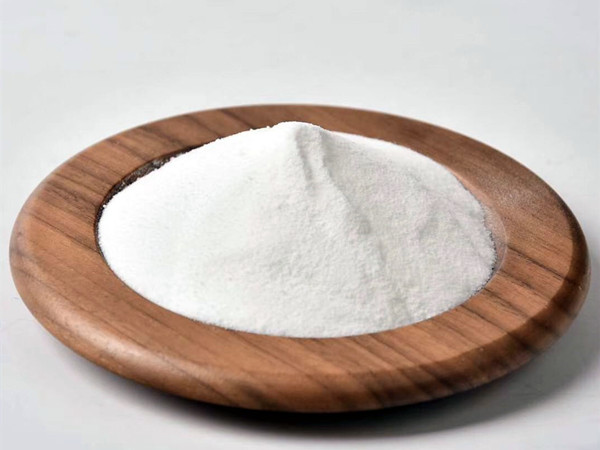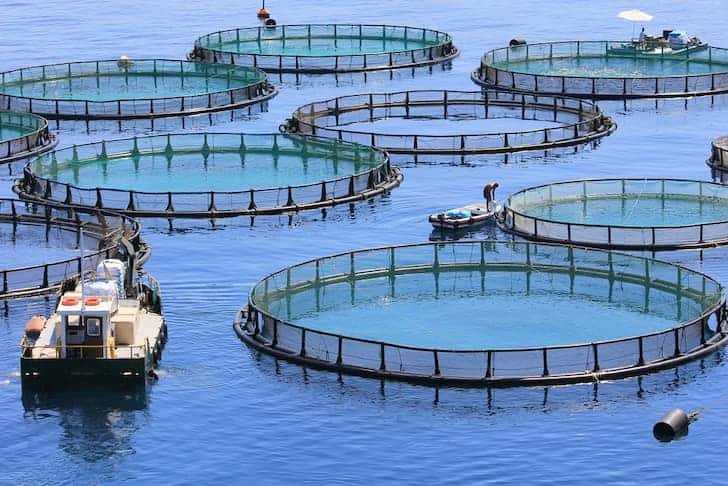Benefits of Inulin for Fish Feed in Aquaculture
As the aquaculture industry continues to grow, the need for sustainable and efficient fish feed becomes paramount. One innovative ingredient that has shown promise in fish feed formulation is inulin. Inulin is a kind of plant polysaccharide, also known as fructooligosaccharides (FOS), mainly extracted from chicory root and Jerusalem arum. It is a linear oligosaccharide or polysaccharide connected by D-fructose via β-(2,1) -glucoside bond. It is a naturally soluble dietary fiber with low sweetness and calories. Inulin is widely distributed in nature as a carbohydrate and is found in more than 30,000 plants including bananas, barley, garlic, Onions…. Among them, Jerusalem artichoke and banana tubers are often used as raw materials for industrial production due to their high inulin content and are good raw materials for the production of oligosaccharides, polyfructose, high fructose syrup, crystalline fructose and other products.
Due to its non-digestible nature, inulin is considered a prebiotic, meaning it serves as a food source for beneficial bacteria in the gut. In the past few decades, a large number of studies have proved that inulin, as a mild taste, non-irritating, good biological activity, can effectively regulate the intestinal microflora, improve immunity and mineral absorption, regulate lipids, blood sugar, antioxidant, anti-cancer and so on. As a prebiotic, dietary fiber supplement, texture improver, fat/sugar substitute, etc., inulin powder is widely used in the additive, food/beverage industry. In aquaculture, inulin, fructooligosaccharides (FOS), and short-chain fructooligosaccharides (scFOS) are the most common prebiotics and bring benefits to a wide variety of farmed objects.
Benefits of Inulin in aquaculture
Incorporating inulin into fish feed formulations offers numerous benefits for aquaculture. From improved digestive health and enhanced immune function to reduced environmental impact and enhanced growth performance, inulin proves to be a valuable ingredient for the development of sustainable fish feeds. The benefits of Inulin in aquaculture include:
Improved Gut Health
Including inulin in fish feed promotes the growth of beneficial gut bacteria, such as Lactobacillus and Bifidobacterium. These bacteria help enhance the digestive capacity of fish, improving nutrient absorption and reducing the incidence of digestive disorders.
Enhanced Immune system
Inulin has been shown to stimulate the immune system in fish. It activates immune cells, such as macrophages and lymphocytes, thereby increasing their ability to combat pathogens and reduce the likelihood of infections. By supporting the fish’s immune system, inulin can contribute to lower mortality rates and improved overall health in aquaculture systems.
Reduced Environmental Impact
One of the major challenges in aquaculture is the release of excess nutrients into the environment, leading to eutrophication and negative impacts on water quality. Inulin can play a role in mitigating these issues. As a prebiotic, it helps regulate the gut microbiota of fish, leading to improved nutrient utilization and reduced excretion of nitrogen and phosphorus. This results in a more sustainable aquaculture system with lower nutrient waste.
Enhanced Growth Performance
Studies have shown that the inclusion of inulin in fish diets can promote growth performance. The improved gut health and nutrient absorption facilitated by inulin lead to better feed conversion ratios and increased weight gain in fish. This not only benefits the profitability of aquaculture operations but also reduces the reliance on wild fish stocks for fishmeal production.

Prebiotic Inulin
Application of Inulin in Aquaculture
Inulin can be incorporated into fish feed formulations for various aquaculture species, including freshwater and marine fish, as well as shrimp and prawns. It can be used as a partial replacement for traditional carbohydrate sources, such as corn or wheat, without compromising feed quality or palatability. Inulin can be included in fish feed in different forms, including powder, pellets, and extruded products. It also can be combined with other functional ingredients, such as probiotics or antioxidants, to create synergistic effects and optimize fish health and performance.
Freshwater shark (Pangasianodon hypophthalmus)
Freshwater sharks are one of the main farmed species because they are easy to breed, tasty and valuable. However, diseases caused by Edwardsiella and aeromonas hydrophila are common to this species and seriously impair freshwater shark farming. Studies have shown that adding 1% inulin to freshwater shark feed every 2 weeks can help fish grow well, improve immunity and increase resistance to Edwardsiella. The results showed that the growth rate of fish, lysozyme activity increased, and mortality decreased greatly.
Tilapia (Oreochromis niloticus)
Tilapia (Oreochromis niloticus) is one of the most common freshwater fish. However, the inadequate supply of fresh water poses a major challenge to tilapia farming, and the development of tilapia farming in brackish water or seawater has become an important alternative. Although tilapia is well suited to growing in brackish water, chronic stress can have a variety of adverse effects on tilapia, such as: reduced growth rate and survival rate, poor nutrient absorption, and inhibited reproductive ability. To improve the situation, researchers have found that inulin can be used as an effective supplement to relieve oxidative stress and gut microbiome disturbances. In this study, feed using inulin increased the growth rate and reduced the feed conversion coefficient. The study finally concluded that the optimal proportion of inulin in tilapia feed is 0.4%.
In addition, some studies have shown that adding inulin to food boosts immunity and stimulates many other fish (such as salmon) to achieve good growth rates (Grisdale-Helland et al., 2008), grouper (Reyes-Becerril et al., 2014), grouper (Reyes-Becerril et al., 2014). Carp (Eshaghzadeh et al., 2015)…
Shrimp(Litopenaeus Vannamei)
Diseases caused by viruses, such as white spot syndrome (WSSV), cause serious deaths on shrimp farms. Because shrimp cannot be vaccinated and do not have a specific immune system, there is often no cure for the disease. Therefore, several studies have been conducted to see if inulin supplementation can protect white shrimp from white spot syndrome (WSSV). In this study, inulin was fed at 1.25 g/1 kg. 2.5g/1kg feed; 5g/1kg feed; The content of 10g/1kg feed is used for 73 days. The results showed that the content of 2.5g/1kg feed; 5g/1kg of inulin in the feed can improve the activity of phenoloxidase (natural immune response of shrimp), which indicates that the addition of inulin can combat the ability of white spot syndrome (WSSV), and can inhibit the oxidation of peroxides and increase the antioxidant activity under low salinity conditions.
Another study also demonstrated that the addition of inulin significantly improved the growth and expression of immune-related genes in Penaeus alba, enhancing the ability to resist the virus that causes white spot syndrome. The study promoted the ability of shrimp to resist vibrio by adding beneficial bacteria that promote the gastrointestinal tract, as well as using inulin (5mg/g) and oligosaccharides (5mg/g) to directly activate the innate immune response of shrimp.
As the aquaculture industry continues to expand, harnessing the potential of inulin can contribute significantly to its growth and sustainability. The use of inulin in aquaculture is already gaining traction, with some feed manufacturers incorporating it into their formulations. With a reduced environmental impact and improved fish health and growth, inulin has the potential to contribute to a more sustainable and efficient aquaculture industry. The utilization of inulin in fish feed is a promising avenue for the aquaculture industry.



